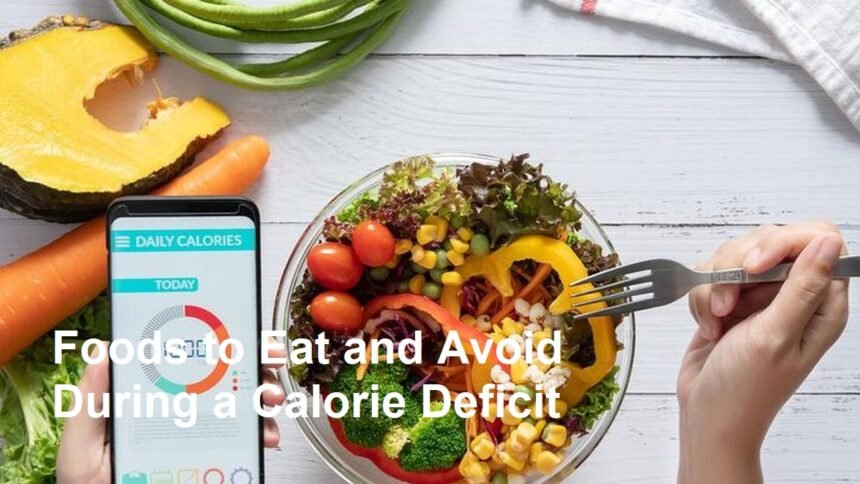Introduction
Maintaining a calorie deficit is one of the most effective ways to lose weight, but let me tell you—it’s not just about eating less. What you choose to put on your plate matters as much as how much you eat. Picking the right foods can help you feel fuller for longer, nourish your body with essential nutrients, and keep those pesky cravings in check. On the flip side, the wrong choices can leave you tired, hungry, and more likely to binge when your willpower dips. So let’s dive into what to eat and what to avoid when you’re aiming for a calorie deficit!
Foods to Eat When in a Calorie Deficit
1. Lean Proteins
Chicken breast, tofu, fish, Greek yogurt, eggs, and turkey are my go-to sources when I’m trying to eat lighter. They’re low in calories but high in protein, which helps keep muscle mass intact and makes you feel fuller for longer. Plus, protein has a nice little thermogenic effect—your body burns more calories just to digest it!
2. Non-Starchy Vegetables
Broccoli, spinach, bell peppers, cauliflower, cucumbers, and carrots—I love loading up my plate with these! They’re nutrient-dense, packed with fiber, and super low in calories. You can eat quite a lot without tipping your calorie budget overboard, which is always a win.
3. Whole Grains
Instead of white rice or regular pasta, try brown rice, quinoa, oats, or whole grain bread. These provide fiber and slow-release energy, so you stay full for longer and avoid those nasty energy crashes that tempt you to reach for sugary snacks.
4. Fruits (in Moderation)
Berries, apples, oranges, and melons are delicious ways to satisfy a sweet tooth while maintaining your calorie goals. They deliver vitamins, minerals, and fiber, though it’s wise to watch your portions because the natural sugars can add up.
5. Healthy Fats (in Small Amounts)
Avocado, nuts, seeds, and olive oil are all fabulous, but a little goes a long way. They help regulate hormones and keep you satisfied, but they’re quite calorie-dense, so I always keep an eye on serving sizes.
Foods to Avoid When in a Calorie Deficit
1. Sugary Drinks
Sodas, sweetened coffee drinks, energy drinks, and even some fruit juices are sneaky calorie bombs. They don’t fill you up, but they sure pack on the calories.
2. Refined Carbs and Pastries
White bread, pastries, cakes, and cookies digest quickly and spike your blood sugar, leaving you hungry soon after. They’re also easy to overeat, which can totally sabotage your efforts.
3. Deep-Fried and Fast Food
French fries, fried chicken, burgers, and most takeout meals are usually high in both calories and unhealthy fats. They’re tasty, but they often lack the nutrients your body truly needs.
4. Processed Snacks
Potato chips, cheese puffs, crackers—the list goes on. Processed snacks are engineered to be tasty and addictive, but they often lack fiber and protein, so they don’t satisfy your hunger in the long run.
5. High-Calorie Sauces and Dressings
Dressings, mayonnaise, creamy sauces, and even some ketchup varieties are loaded with hidden sugars and fats. They can silently add hundreds of calories to your meal without you even noticing.
Balancing Enjoyment and Discipline
In my experience, the happiest and most successful calorie deficits come from a mindset of balance. Allowing yourself the occasional treat in small portions can help you stick with your plan for the long haul. The key is to fuel your body with wholesome foods most of the time and to learn what really satisfies your appetite. With a bit of smart planning, you’ll find that you can enjoy your meals, feel satisfied, and still make great progress toward your goals. Stick with it, experiment with recipes, and remember: the journey matters as much as the destination!












